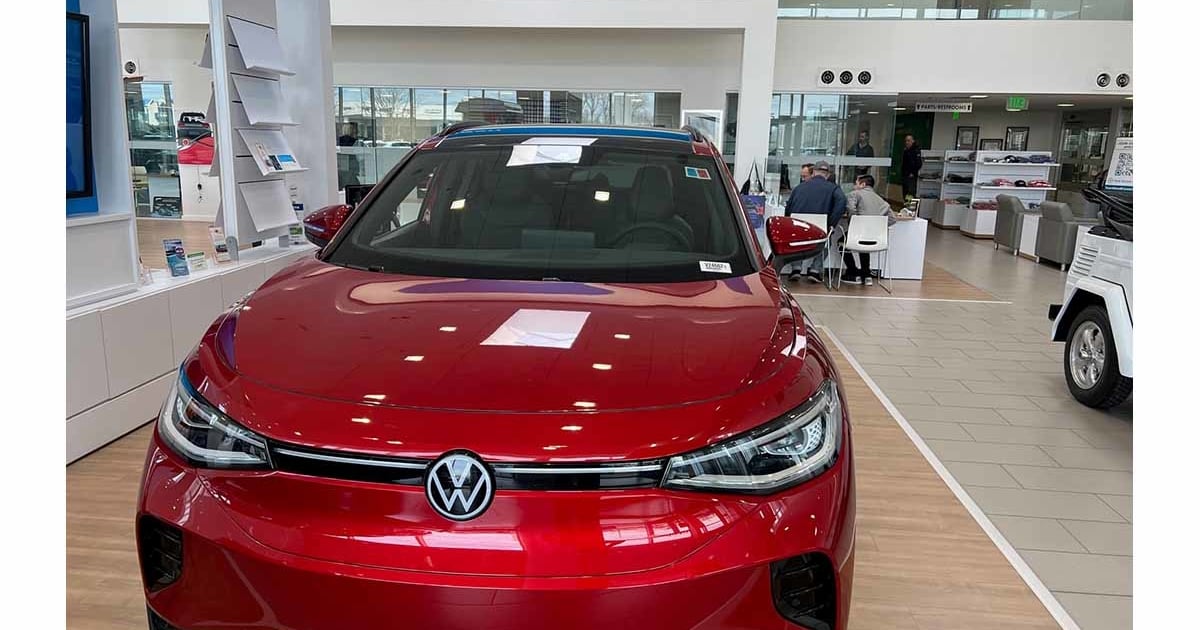
U.S. light-vehicle sales got off to a strong start in the first quarter, but the new-vehicle market showed signs of losing momentum by March as rising interest rates and transaction prices are putting pressure on what consumers can afford.
Supply constraints that have suppressed car and light truck availability for the last two years remain but are easing. Analysts say March sales should reflect an improvement from a year ago, but the pace has slowed since the start of this year, suggesting that economic headwinds and affordability concerns are forcing some buyers to the sidelines.
Most automakers are scheduled to report March or first-quarter U.S. sales results on Monday.
The seasonally adjusted annualized selling rate for March is forecast to come in between 13.8 million and 14.4 million vehicles. That would be an improvement from the 13.7 million rate in March 2022, according to Motor Intelligence, but well below the 15.2 million pace in February and 16.2 million in January.
S&P Global Mobility forecasts the March sales rate at 13.8 million. Cox Automotive projects a 14.1 million sales rate, while J.D. Power and LMC Automotive anticipate 14.4 million.
Growth in fleet is projected to offset weaker growth in retail sales, forecasts show. J.D. Power and LMC Automotive anticipate total March sales of 1,330,700 new vehicles, for a 6.2 percent increase compared with March 2022, but just a 1.9 percent increase in new-vehicle retail sales for the same period.
For the first quarter, J.D. Power and LMC Automotive forecast total sales of 3,526,700 new vehicles, which they said was a 7.3 percent overall increase from a year ago, while new-vehicle retail sales rose only 0.2 percent.
“Retail sales are almost flat from a year ago,” said Tyson Jominy, vice president of data and analytics at J.D. Power. “The growth is all coming out of the fleet channel.”
Sales seasonality tends to be better for fleet than retail in the first quarter, Jominy said. But demand remains strong among fleet buyers, who have sourced vehicles any way they can after initially reducing their inventories during the pandemic. Many automakers, which prioritized more profitable retail sales during the pandemic and chip shortage, still face a backlog of commercial and rental fleet orders.
Cox Automotive said it estimates 2.2 million fleet sales in 2023, a 23 percent bump compared with 1.8 million last year. Jonathan Smoke, Cox Automotive’s chief economist, told reporters Monday that fleets have been “starved” of inventory and have looked to auctions and dealership lots as an alternative to automakers. Smoke believes fleet buyers are inclined to take every vehicle the industry is capable of delivering this year.
“If it weren’t for the strong gains in fleet, the new-vehicle market would look a bit more disappointing so far this year, and we would see evidence of supply starting to build there. But the overall market is still supply-constrained, so that’s the saving grace,” he said.
“I’m not feeling too good, frankly, about the rest of the spring and the summer,” Smoke added, “because … a lot of these things that appeared to be tailwinds at the very beginning of the year have rapidly turned into headwinds.”
Cox on Monday raised its full-year new-vehicle sales outlook to 14.2 million, up slightly from 14.1 million at the start of the year. That would reflect an increase of roughly 400,000 more sales this year compared with 2022, Cox said. The market finished 2022 down 7.9 percent at 13.866 million, the weakest year since 2011, when volume totaled 12.78 million, and well below the heady years of 2015 to 2019 when deliveries topped 17 million vehicles.
S&P Global Mobility raised its outlook to 14.9 million, up from 14.8 million, “with continued month-to-month volatility expected in the SAAR readings through the first half of the year,” Chris Hopson, principal analyst at S&P Global Mobility, said in a statement.
Consumers continue to be squeezed by rising transaction prices on new vehicles, analysts say. J.D. Power and LMC Automotive projected that the average new-vehicle transaction price will reach $45,818 in March, a record for the month and up 3.5 percent from a year earlier.
Rising interest rates have pushed up monthly payments for consumers at all credit ranges, Smoke said, adding that subprime and deep-subprime buyers have nearly been eliminated from the new-vehicle market. And credit appears to have tightened since several regional banks collapsed earlier this month, he said.
“We’re increasingly depending on a much higher-income, wealthier, higher credit-quality consumer in the new-vehicle market,” Smoke said. “So far, there’s plenty of those to consume supply that’s been delivered at a 13 to 14 million pace. The real test of this whole pent-up demand — is-there-or-isn’t-there — argument is going to be when we start to see supply” rebound further.